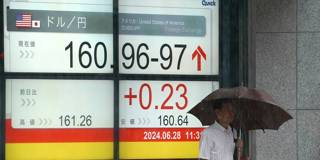Donald Trump believes that devaluing the dollar will restore America’s manufacturing sector to its former glory. But even if the greenback weakens sooner rather than later – as looks likely, regardless of policy decisions – a second Trump administration would probably still forge ahead with its disastrous tariff plan.
CAMBRIDGE – If former US President Donald Trump returns to the White House in 2025 – and most betting markets still have the odds at 60% or better – will he achieve the weak dollar that both he and his running mate, Senator J.D. Vance, so desperately want? Their view, of course, is that something must be done to restore America’s manufacturing sector to its former glory, and they believe that the best way to achieve this goal is by imposing high tariffs and devaluing the greenback.

CAMBRIDGE – If former US President Donald Trump returns to the White House in 2025 – and most betting markets still have the odds at 60% or better – will he achieve the weak dollar that both he and his running mate, Senator J.D. Vance, so desperately want? Their view, of course, is that something must be done to restore America’s manufacturing sector to its former glory, and they believe that the best way to achieve this goal is by imposing high tariffs and devaluing the greenback.